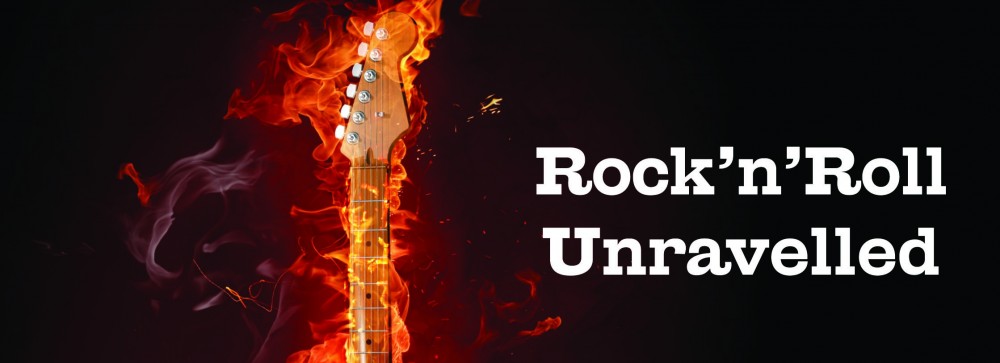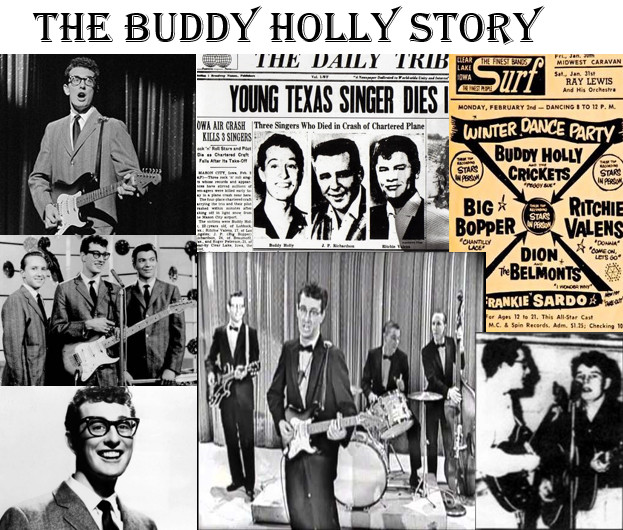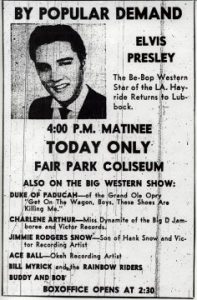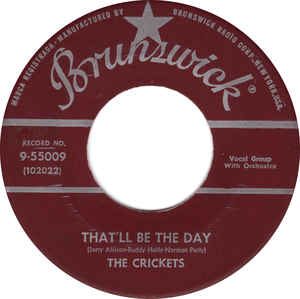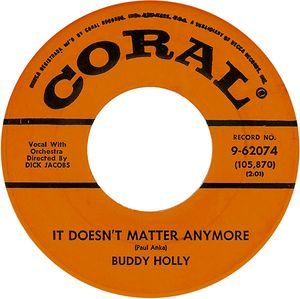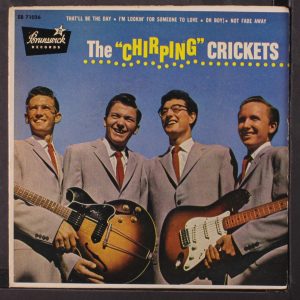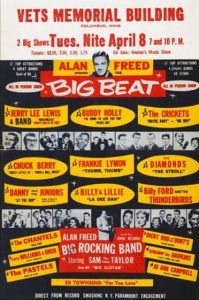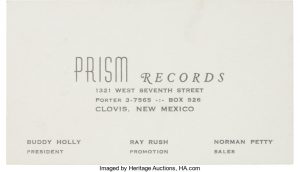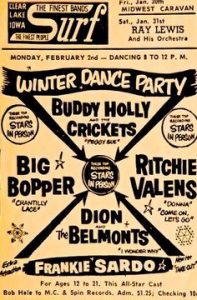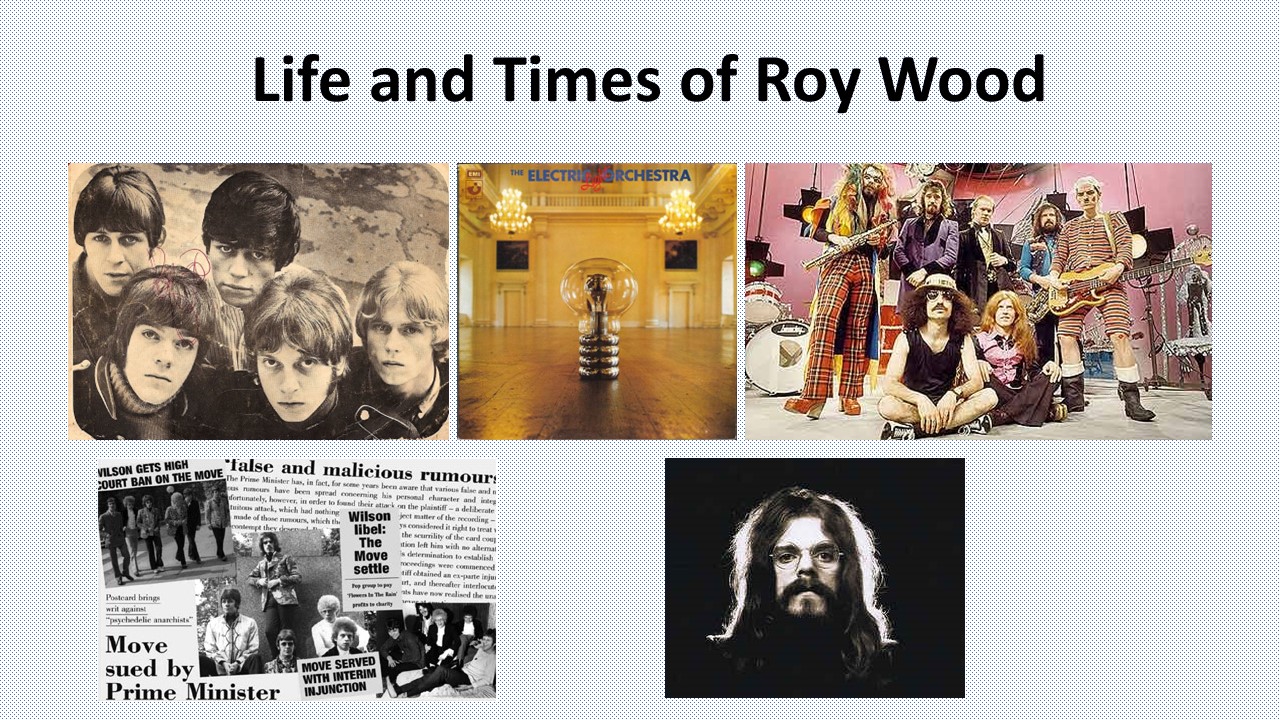The Buddy Holly Story
One of rock’n’roll’s true icons, the Buddy Holly story…
PODCAST
The Buddy Holly Story
60th Anniversary of Buddy Holly’s Death
The 3 February 2019 is the 60th anniversary of the tragic death of rock’n’roll legend Buddy Holly. He played his final gig in Clear Lake, Iowa, where he made the fateful decision to abandon the tour bus and charter a light aircraft to fly to Fargo, North Dakota, for the next concert gig in nearby Moorhead. The plane never reached Fargo…
This article looks at the career of one of the pioneers of rock’n’roll, Buddy Holly.
Buddy Holley’s Early Days
– Yes, there was originally an “e” in his name…
Born Charles Hardin Holley in Lubbock, Texas on 7 September 1936, he sometimes used “Charles Hardin” for his song-writing credits. His surname included an “e”, Holley. A typing error when he signed to Decca transformed Buddy Holley, into Buddy Holly.
In 1941, at the age of five, Buddy Holley won a local talent contest with his rendition of Down the River of Memories. This success earned him the princely sum of $5.
He signed his first record deal with Decca in February 1956, although, by that time he had already made a number of recordings. Between 1949 and 1955 he made various recordings in a variety of circumstances. His first recording came in 1949, when he recorded into a wire recorder. Three years later he made a home recording with Bob Montgomery, who would become a regular singing partner of Holley’s.
Buddy was a regular guest on The Sunday Party on his local radio station KDAV. As Buddy and Jack (Jack Neil) he made various recordings at the station in 1953. By 1954 he’d teamed up with Bob Montgomery and Buddy and Jack was replaced with Buddy and Bob on The Sunday Party.
In 1954 and 1955, Holley regularly recorded at Nesman Recording Studio in Wichita Falls. He was accompanied at various times by: Bob Montgomery, Sonny Curtis, Larry Welborn, Don Guess and Jerry Allison. All names which can be recognised as future Crickets.
Bob Montgomery accompanied Holley on many of his early recordings. In 1977 MCA Coral released the album Western and Bop by Buddy Holly and Bob Montgomery.
A red-letter day in Holley’s diary came on 13 February 1955, when Buddy and Bob opened for Elvis Presley at the Fair Park Coliseum, Lubbock. On their business card, Buddy and Bob described themselves as purveyors of “WESTERN AND BOP”. The card also named Larry Welborn (upright bass player) and Bus. Manager – “HI POCKETS DUNCAN”.
This was a year before Elvis’s first hit single Heartbreak Hotel, which entered the Billboard Top-40 on 10 March 1956. Before finding success on RCA, Elvis had released five singles at Sun Records.
July 1954: 1st Sun single – That’s All Right
Sep 1954: 2nd Good Rockin’ Tonight
Jan 1955: 3rd Milkcow Blues Boogie – his current single when Buddy and Bob opened for him
Elvis’s 2nd single, Good Rockin’ Tonight, was written and originally released by Roy Brown in 1947. It failed to find success at the time. Wynonie Harris covered the song in 1948 and scored an R&B #1, spending 25 weeks on the charts.
On 28 Oct 1955 Buddy and Bob were back at the Fair Park Coliseum, opening for Marty Robbins.
Buddy Holly Signed to Decca
In December Buddy and Bob were at Nesman Recording Studio in Wichita Falls. The lineup included Jerry Allison and the recordings included: Love Me, Don’t Come Back Knockin’, Moonlight Baby and I Guess I Was Just A Fool. These demo recordings were submitted to Decca, resulting in a record deal for Holley a few weeks later.
When Buddy Holley signed to Decca, the contract mistakenly omitted the “e” from his surname, Holley. He signed with the new spelling and became – Buddy Holly.
Buddy Holly attended his first recording session for Decca on 26 January 1956. This was at Owen Bradley’s recording studio in Nashville. The session featured guitarist Sonny Curtis and bassist Don Guess. The recordings included Love Me and Blue Days Black Nights. Holly cowrote Love Me.
His debut single for Decca single, Blue Days Black Nights c/w Love Me was released on 16 April. The same coupling was released on Brunswick in the UK on 2 July.
Buddy Holly and the Three Tunes returned to the recording studio at the end July, for their second Decca recording session. Recordings included: That’ll Be the Day, Rock Around with Ollie Vee and Ting-A-Ling. The lineup: Buddy Holly, Sonny Curtis, Don Guess and Jerry Allison. The writing credits for That’ll Be the Day went to Jerry Allison, Buddy Holly and Norman Petty. Holly later disputed Petty’s involvement in many of the song writing credits. Norman Petty was the manager of both Buddy Holly and the Crickets. It was common practice at the time for managers and DJs to add their names to writing credits, in order to receive writing royalties.
Modern Don Juan was released as Holly’s second and final Decca single on Christmas Eve (US). It was written by Don Guess and Jack Neil, formally Buddy’s partner in Buddy and Jack. Both singles, Blue Days Black Nights, and Modern Don Juan sank without trace and Decca dropped him from their artists roster.
Buddy Holly and the Crickets
The 25 February 1957 is a major landmark, Buddy was now with the Crickets and this was the day they recorded That’ll Be the Day. Norman Petty became the manager for both Buddy Holly and the Crickets and this recording was made at his Clovis Studios in New Mexico. Holly’s backing group comprised: drummer Jerry Allison, guitarist Niki Sullivan and upright bass player Larry Welborn. (His regular bass player was Joe B Mauldin.) The song’s title is taken from a line in the John Wayne movie The Searchers.
Buddy Holly’s Releases on Coral & The Crickets’ Releases on Brunswick
This is where the story becomes rather complicated. Norman Petty managed both Buddy Holly and The Crickets. They signed separate record deals with the same label – Coral, a subsidiary of Decca. The subsequent recordings made by Buddy Holly and the Crickets were released on two different record labels, Brunswick and Coral. This dual release policy only applied to America.
In March the Crickets signed to Coral. In May, Buddy Holly signed a separate recording deal with Coral. As a result some of the Buddy Holly and the Crickets singles were released as “The Crickets” on Brunswick and others as “Buddy Holly” on Coral. In the UK the singles were all released on Coral but the credits retained the separate identities of “Buddy Holly” and “The Crickets”.
The problem arose from Buddy Holly’s previous stint at Decca. He was dropped by the label after his two singles there failed to garner any interest. As a result, he was prohibited from recording any of the songs which he had previously recorded for Decca. The first single Holly and the Crickets released together That’ll Be the Day had already been recorded by Holly during his time with Decca. In order to avoid potential problems with Decca the new version was released as “The Crickets”, on Brunswick.
First Hit Single
That’ll Be the Day was released on 27 May, as “The Crickets”. It entered the Billboard Top-40 on 19 August. This delivered their first American hit, making the #1 spot for one week. It was to be their only American #1.
Decca tried to cash-in on this success and released Buddy Holly’s earlier version of That’ll Be the Day c/w Rock Around with Ollie Vee. Sonny Curtis wrote the B-side. This Decca version failed to trouble the American charts.
In the UK the Buddy Holly and the Crickets version of That’ll Be the Day was released as “The Crickets” on the Vogue Coral label. It too failed to chart in the UK.
The first single released as “Buddy Holly” came with Words of Love in June (US). On the Coral label, the song was written by Buddy Holly. This is an early example of overdubbed lyrics. It failed to chart.
In September they released Peggy Sue c/w Everyday (US). This was the first hit credited to “Buddy Holly”, with the writing credit going to Charles Hardin (Buddy Holly) and Norman Petty. Their second American hit, peaking at #3. When Everyday was recorded, drummer Jerry Allison replaced his drum kit with some knee-slapping percussion. The drumming for the A-side, Peggy Sue, is also a little different. It uses a rudiment not often found in rock drumming, the paradiddle (L-R-L-L R-L-R-R).
Peggy Sue underwent a name change during the writing process. Peggy Sue Gerron was Crickets’ drummer, Jerry Allison’s girlfriend at the time. He was co-writing the song with Buddy Holly. Holly’s original name for the song was Cindy Lou. Allison persuaded him to change the title to Peggy Sue, in order to help him impress his girlfriend. It worked and they later married. Sadly, it all ended in divorce.
In November Peggy Sue c/w Everyday was released in the UK, credited to “Buddy Holly” on the Vogue Coral label. This was the first “Buddy Holly” hit in the UK, #6.
In October they released Oh Boy! c/w Not Fade Away (US), as “The Crickets”. Oh Boy! gave them their third American hit, #10. Not Fade Away had a writing credit for Norman Petty and Charles Hardin. It was covered by the Rolling Stones in 1964 and gave them their third UK hit, their first Top-10, peaking at #3.
The Albums
In November they released their first album, The Chirping Crickets (US), as “The Crickets”. On the album cover’s reverse side, the credit is given to “the crickets – vocal group with orchestra”. The lineup is listed as Buddy Holly – lead singer, guitarist and founder of the group; Joe Mauldin – bass; Jerry Allison – drums; and Niki Sullivan – guitar. The album is very much positioned as a “Crickets” rather than “Buddy Holly and the Crickets” album.
Staying with album releases in Buddy Holly’s lifetime…
The second album, Buddy Holly was released on Coral in February 1958 and credited to “Buddy Holly”. Holly is not wearing his trademark glasses on portrait photo on the front cover. The back sleeve credits the album to “Buddy Holly – vocal with instrumental accompaniment”. Very little reference is made to to the Crickets.
Decca released the third album, That’ll Be the Day in April 1958. This comprised material recorded by Buddy Holly during his stint with Decca, before he joined Coral/Brunswick.
Tours & Ivan’s Solo Single
They made their first appearance on The Ed Sullivan Show on 1 December 1957. This was a very influential non-music show which broke Elvis and the Beatles to American audiences nationwide. Niki Sullivan parted company with the Crickets shortly after this show.
On 1 March 1958 Buddy Holly and the Crickets opened their headlining UK tour at the Trocadero in London’s Elephant and Castle. This was a trio with Holly, drummer Jerry Allison and bassist Joe B Mauldin. At the last show of UK tour, at London’s Hammersmith Odeon on 25 March, two of the band resorted to fisticuffs backstage. Famously, Joe B Mauldin punched Holly, knocking the caps off two of his front teeth. Holly performed the second show with gum spread over his front teeth.
A few days later, on 28 March, Alan Freed’s Big Beat package tour opened in New York. Alan Freed is accredited with coining the term “rock’n’roll”. This American tour was headlined by Jerry Lee Lewis and Chuck Berry, with Buddy Holly and the Crickets as one of the supporting acts. On the opening night Jerry Lee Lewis and Chuck Berry argued backstage as to which of them should close the show. Berry was the more seasoned performer but Lewis had recently scored two massive hits with Whole Lot of Shakin’ Going On and Great Balls of Fire. In his wisdom, Freed decided that Chuck Berry should close the show. Lewis took a dim view of this and delivered a storming performance, which included setting fire to his piano. Urban legend has it that when he left the stage he said to Berry, words to the effect “Follow that!!”
When the tour reached Boston on 3 May, it ended in the notorious “Boston Riot”. During the show the houselights were brought up in an attempt to stop the rowdiness, with kids dancing in the aisles. Alan Freed took to the stage and appealed to the police to turn off the house lights. He is alleged to have said, “It looks like the police in Boston don’t want you kids to have fun”. The violence continued outside the theatre, resulting in at least one person being stabbed. As a result of the violence, rock’n’roll concerts in Boston were banned. Freed was charged with inciting a riot but the charges were eventually dropped.
On 22 July 1958 Peggy Sue got married. Crickets’ drummer Jerry Allison married Peggy Sue Gerron in Honey Grove, Texas. Allison and Peggy Sue met in Lubbock High School in Texas. What started with the renaming of a song, from Cindy Lou to Peggy Sue, ended in divorce.
In August Jerry Allison released a solo single, Real Wild Child (US), credited to “Ivan”. This was his middle name, JI Allison. The song was written and originally released by Johnny O’Keefe and the Dee Jays in Australia on 5 July 1958. This song is accredited as the birth of Australian rock’n’roll.
Buddy Holly’s Last American Hit Single
Buddy Holly’s last American hit in his lifetime came on 11 August, when Early in the Morning entered the Billboard Top-40. Credited to “Buddy Holly”, it peaked at #32.
TOTAL US HITS IN HIS LIFETIME = 7
Later US Hits = 1
Bobby Darin and Woody Harris wrote Early in the Morning. The original version was by Bobby Darin with the Helen Way Singers. They released it as The Ding-Dongs on the Brunswick label. Record label Atco, a subsidiary of Atlantic Records, learned that Bobby Darin was a part of the Ding Dongs. They took a very dim view of Darin moon-lighting under a different name, since he was already under contract to them. Atco re-released the song as The Rinky-Dinks. This prompted Brunswick to put out their own cover version by Buddy Holly, which, naturally, was released on the Coral label. The Rinky-Dinks version gave Darin his second Billboard Top-40 hit, #24. Darin’s first hit was Splish Splash, which entered the Billboard Top-40 on 30 June and peaked at #3. Bobby Darin was Atco/Atlantic’s first pop star.
Buddy Holly married Maria Elena Santiago in Lubbock, Texas on 15 August.
Buddy Holly Set up His Own Record label
The following month Holly formed his own record label, Prism Records. Buddy Holly is listed as “President” and Norman Petty as “Sales”. Two recording sessions are known to have taken place:
Waylon Jennings
Recorded two songs at Norman Petty’s studio on September 10. These featured King Curtis on sax and found a release on Brunswick in May 1959.
Lou Giordano
Recorded two songs at Belton Studios, New York City on September 30. They were released on Brunswick in February 1959.
Buddy Holly played guitar on both sessions, produced Waylon Jennings and co-produced Lou Giordano with Phil Everly.
Buddy Holly’s Final Recordings
On 21 October Buddy Holly made his last studio recordings, the famous “string session” at Pythian Temple Studios, New York. The Dick Jacobs Orchestra provided the string accompaniment. They recorded four songs: It Doesn’t Matter Any More, Moondreams, Raining in My Heart and True Love Ways. Paul Anka wrote It Doesn’t Matter Any More. Holly’s final recordings were made at his home in December and January.
Buddy Holly and the Crickets gave their last TV performance together on American Bandstand on 28 October. They performed Heartbeat and It’s So Easy.
Shortly afterwards he parted company with Norman Petty. The Crickets decided to stay with Petty. Buddy Holly was now a solo artist.
Towards the end of 1958 Sonny Curtis and Earl Sinks joined the Crickets.
In November they released Heartbeat (US), as “Buddy Holly”. By this time Holly had parted company with Norman Petty and the Crickets. The single failed to trouble the American charts but the UK release was a hit.
Using an Ampex tape recorder, Buddy Holly made the first batch of his final recordings at his apartment in Greenwich Village on 3 to 7 December. The songs included: What to Do, Peggy Sue Got Married and Crying, Waiting, Hoping.
Buddy Holly famously wrote a song in just 30 minutes, when he appeared on Lubbock’s KLLL radio station on 27 December. The song, You’re the One, was recorded on the station’s acetate machine. Buddy sings and plays guitar and was ably assisted with some handclap percussion by station DJs, Waylon Jennings and Ray “Slim” Corbin.
The FINAL HOME RECORDINGS were made between 1 and 19 January 1959. The songs included: Wait Till the Sun Shines Nellie, Slippin’ and Slidin’, Love is Strange and Smokey Joe’s Café a cover of The Robins’ 1955 classic. There were around 14 songs in all, some with with multiple takes.
The last UK hit in Buddy Holly’s lifetime came in January, with Heartbeat, credited “Buddy Holly”. It spent a single week on the chart, at #30.
Buddy Holly’s Last Tour – Winter Dance Party
On 23 Jan 1959 Buddy Holly’s ill-fated Winter Dance Party tour opened, at George Devine’s Ballroom in Milwaukee, Wisconsin. Buddy had parted company with the Crickets. For this tour his backing band comprised: guitarist Tommy Allsup, drummer Carl Bunch and bassist Waylon Jennings.
The tour was across America’s mid-West, in mid-winter. It’s very, very cold. You can throw a cup of hot coffee into the air and it will freeze before it hits the ground. Conditions on the tour bus were dire. It was constantly breaking down. The degree of discomfort can be seen by the fact that Carl Bunch was hospitalised after suffering frostbite. He missed the fateful concert at Clear Lake, Iowa, although, he did recover and rejoined the tour a couple of days after the plane crash.
Buddy Holly gave his swansong performance at the Surf Ballroom, Clear Lake, Iowa on 2 February 1959. The last song of the set was Brown Eyed Handsome Man, a cover of Chuck Berry’s 1956 R&B hit. It was here that he decided to hire a light aircraft to take his band to the next gig, in Moorhead, Minnesota.
3 Feb 1959 – The tragic death of Buddy Holly in a plane crash.
The tour bus had been regularly breaking down due to the sub-zero temperatures. Holly decided enough was enough and chartered a light aircraft to fly his band to Fargo, North Dakota, for the next concert in Moorhead, Minnesota. Holly’s backing musicians, Waylon Jennings and Tommy Allsup were planning to accompany him. Fate took a hand. Jennings gave up his seat for the Big Bopper and Ritchie Valens “won” the flip of a coin and occupied Allsup’s seat. The plane took off shortly after midnight and crashed a few miles out of Clear Lake, killing the pilot Roger Peterson and his three passengers, Buddy Holly, the Big Bopper and Ritchie Valens.
It’s an ill wind… the tragedy launched the career of Fargo’s own Bobby Vee. After news of the crash broke in Fargo a search began for local talent. Fifteen-year-old Bobby Vee with his backing group the Shadows stepped up and performed at the Moorhead concert that evening.
The tour continued with Frankie Sardo and Dion, who were joined by new headliners, Jimmy Clanton and teen idols, Fabian and Frankie Avalon. The final performance of the tour came at Springfield’s Illinois State Armory, on 15 February.
A Few Statistics
LAST EVER US HIT
9 Mar 1959: It Doesn’t Matter Any More – “Buddy Holly”
entered the Billboard Top-40 – 5 weeks after Buddy Holly died – peaked at #13.
TOTAL US HITS in his lifetime: = 7
Later US Hits: = 1 – It Doesn’t Matter Any More
IN THE UK – It Doesn’t Matter Any More – was also his first posthumous hit
27 Feb 1959: entered the UK charts – 3 weeks after he died
#1 in UK – 3 weeks at #1 – This was the only “Buddy Holly” UK #1
TOTAL UK HITS in his lifetime = 5
18 MORE UK Top-70 singles (including It Doesn’t Matter Any More)
1950s – 3
1960s – 13 to 1964: + 1 in 1968
1970s – 0
1980s – 1 – True Love Ways
The Crickets – After Buddy Holly
The Crickets continued to perform. They failed to score again on the Billboard Top-40 but had a string of hits in the UK, which ended in 1964 with (They Call Her) La Bamba.
At the end of 1960 the Crickets released their first post-Buddy Holy album, In Style with the Crickets. The album featured the original version of I Fought the Law. The track was released as a single on both sides of the Atlantic. Sonny Curtis wrote the song, with Earl Sinks taking the lead vocal. There have been some classic covers, including Bobby Fuller and the Clash. Bobby Fuller recorded the song twice. In 1964 he released it as Bobby Fuller and recorded it again as The Bobby Fuller Four in 1965. British punk band The Clash scored a UK hit, #22, with their version in 1979.
